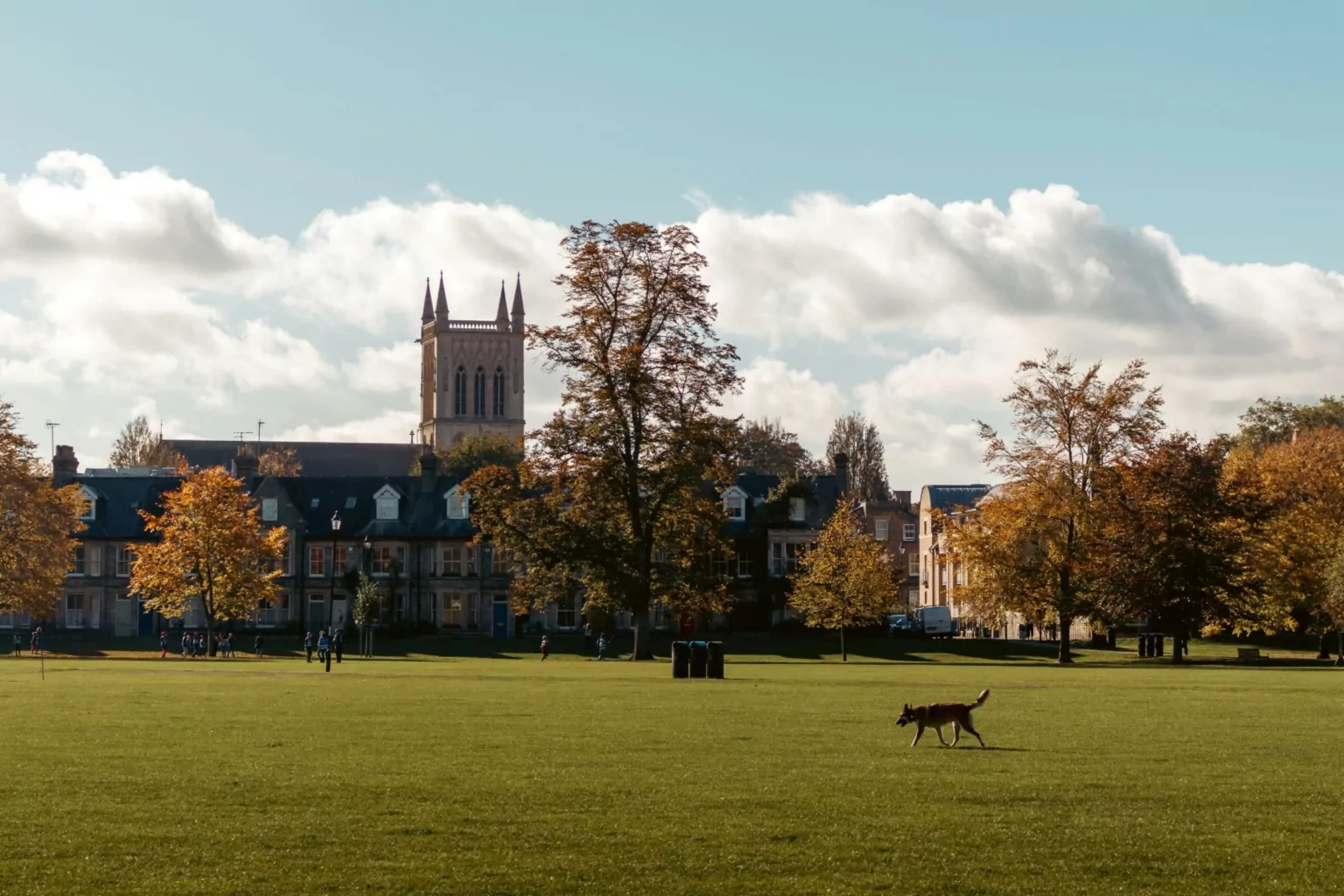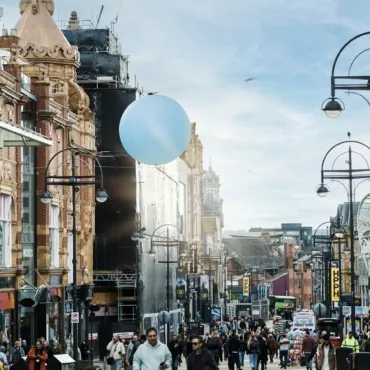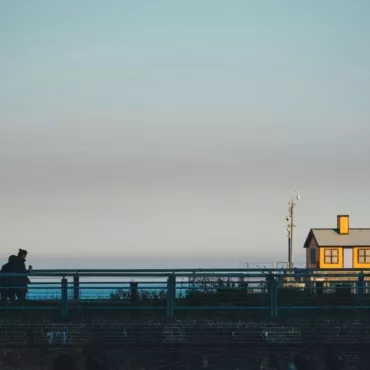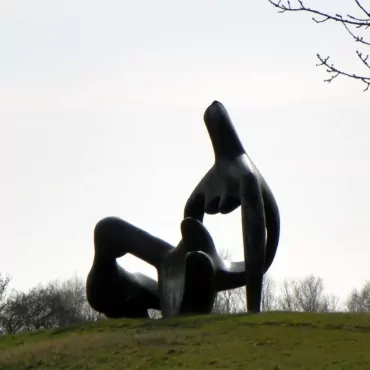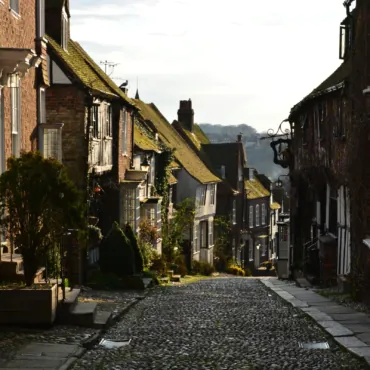Panting

Start your day in Cambridge with a punt on the River Cam. The flat-bottomed boat you will ride on is called a punt. It is usually run by part-time students. They use a special long pole that helps them push off the banks and bottom of the river. If you want, you can rent a boat and steer it yourself, but in reality such daredevils look very funny, balancing with difficulty on the stern and quickly losing the main tool of their “cruise”.
You won’t believe it, but such walks are so popular that even in rainy weather, boat passengers put on plaids, open umbrellas, and continue their journey. One such session lasts 45-50 minutes.
During the tour you will learn more about Cambridge, its student life and alumni, among whom were Isaac Newton, Stephen Hawking and Charles III. Boatmen also like to tell funny stories from the life of teachers and different legends, which tourists like very much.
One of them, by the way, has to do with math bridge, that connects the old and new parts of Queens College. It is said that Isaac Newton himself built it without a single nail, but this is just a legend. In fact, the real author of the construction is carpenter William Ethridge. He built the bridge 22 years after the great scientist’s death. Nevertheless, many people continue to believe in the “Newtonian” legend, so the math bridge is still considered one of the main attractions of the city.
Visit King’s College Chapel

Another place you’re sure to spot on your river walk is King’s College Chapel. A masterpiece of English Perpendicular Gothic, it is the hallmark of Cambridge. The construction of the Chapel was begun by order of King Henry VI of England in 1444. The monarch personally determined the size of the future building, and on July 25, 1446, he himself laid the first stone in its foundation, by the way, if you see the rose symbols inside, then know – they appeared here thanks to the Tudors. They decided to decorate the chapel with them in honor of their victory in the War of the Scarlet and White Rose.
Also note the stained glass windows – they were commissioned by Henry VIII. On one of the panels, the monarch depicted himself as King Solomon. In addition, in the early 1530s Henry ordered an altarpiece, on which you can still find the letters “H” and “A” intertwined in a love knot – a symbol of his union with Anne Boleyn.
Museums

After visiting the Chapel, you can go to the the Fitzwilliam Museum. Its history began with the personal collection of Richard VII Fitzwilliam, an English nobleman who for many years collected rare books and unusual works of art. This collection was considered one of the best in the country and was therefore given to Cambridge University after his death. Fitzwilliam bequeathed a portion of his capital, namely £100,000, specifically for the erection of a building for his collection.
One of the main exhibits of the museum is the lid of the sarcophagus of Ramses III, which weighs 7 tons. It was a gift from George Bacevi, the architect who designed the museum in the 1840s. Works by Titian, Rubens, Monet, Cézanne and Picasso are also on display.

If you’d like to check out the world’s coziest gallery, we suggest heading to Kettle’s Yard. It was once just the home of Jim and Helen Eade. In the 1920s and 30s, the man worked as a curator at the Tate Gallery. Through his friendship with artists and like-minded people, Jim managed to amass a unique collection of works including creations by Barbara Hepworth, Joan Miró, Alfred Wallace and many others. In 1954, the couple decided to create “a residential place where art could be enjoyed, where young people could feel at home, not constrained by the strict rules of a museum or public art gallery.” Jim and Helen later donated their collection to Cambridge University. Today it can be viewed by anyone.
Case clock

When you walk around downtown, be sure to check out the case clock, or as they call it, the “grasshopper clock.” It is located on the facade of the Taylor Library at Corpus Christi College. This clock appeared here in 2008, and the public was introduced to it by Cambridge physicist Stephen Hawking. The grasshopper inside seems to eat up time, reminding us of how fast it’s going and that there’s not as much time left as we think.
Botanical Garden

Botanic Garden Cambridge’s Botanic Garden is located next to the University – and it’s a great place for relaxation, walks and beautiful photographs. It came into being in the 1930s thanks to Charles Darwin’s student John Henslow. The latter founded the garden so that Cambridge students could use the place to study and conduct research. Today you can find black pines in the garden, which were planted by Henslow himself. You will also find a rich “collection” of 10,000 species of trees from all over the world. In addition, the landscape of the garden is beautifully complemented by a lake and greenhouses.
Panoramic view

If you’re not tired yet and want a panoramic view of Cambridge, head to the St. Mary’s Church. It is just next to the market square. This church is older than Cambridge University – its foundations date back to 1010. Henry VII donated 100 oak trees for the roof of St. Mary’s. You’ll have to climb 123 steps to get to the top, but trust me, it’s worth it.
Where and what to eat in Cambridge

- Try the ice cream at Jack’s Gelato. Having appeared on Benet Street in 2010, this ice cream store still attracts crowds of tourists. That’s because here you can try unusual flavors of your favorite dessert, such as white peach sorbet, panettone ice cream and many others.
- Stop by Fitzbillies and be sure to try the Chelsea, a cinnamon and raisin bun. It’s a cross between a cake and a brownie. You won’t believe it, but Fitzbillies has been baking Chesley’s for over 100 years. But the buns don’t stop here – locals also recommend stopping in for brunch or lunch.
- By the way, a good place for lunch might be Fancett’s Bistro. It is a small independent bistro. Locals recommend trying the Cambridge-style asparagus with chopped egg, mayonnaise and crispy Parma ham. And if you’re in the mood for a sweet treat, you can have the Burgundy dessert with truffle honey and crackers. However, you should book a table at Fancett’s Bistro in advance.
- The Free Press is one of the nicest and coziest pubs in Cambridge. It gets its name from the printing press that used to be located in this building. The walls of the pub are still lined with old newspaper pages and maps, from which you can learn more about the history of the city. The best Scotch egg is said to be served here.
- Hidden Rooms bar is located in the very center of the city in the basement of the former Roman baths of the Victorian era. Its menu includes both classic cocktails and unique mixes that will leave no one indifferent.
